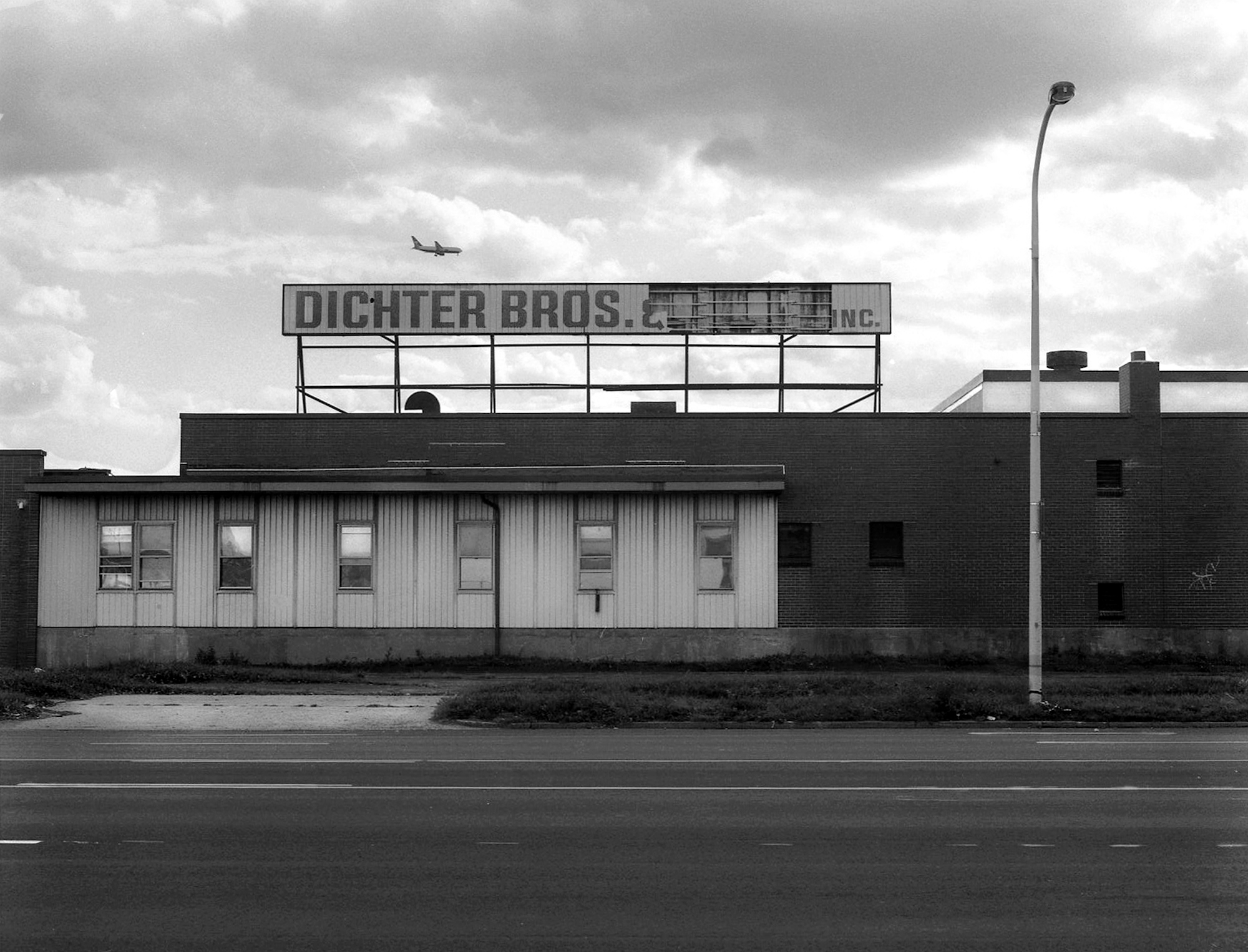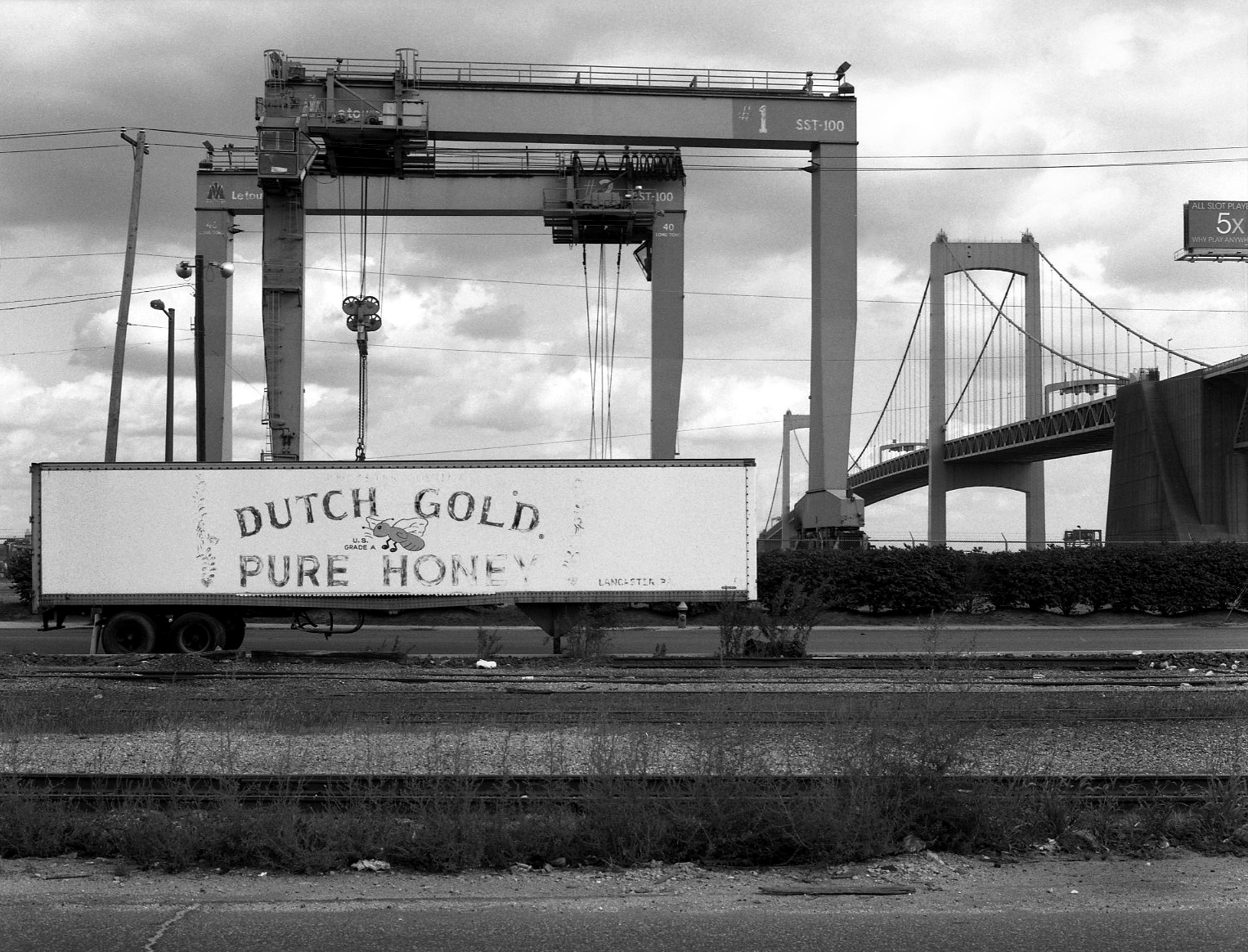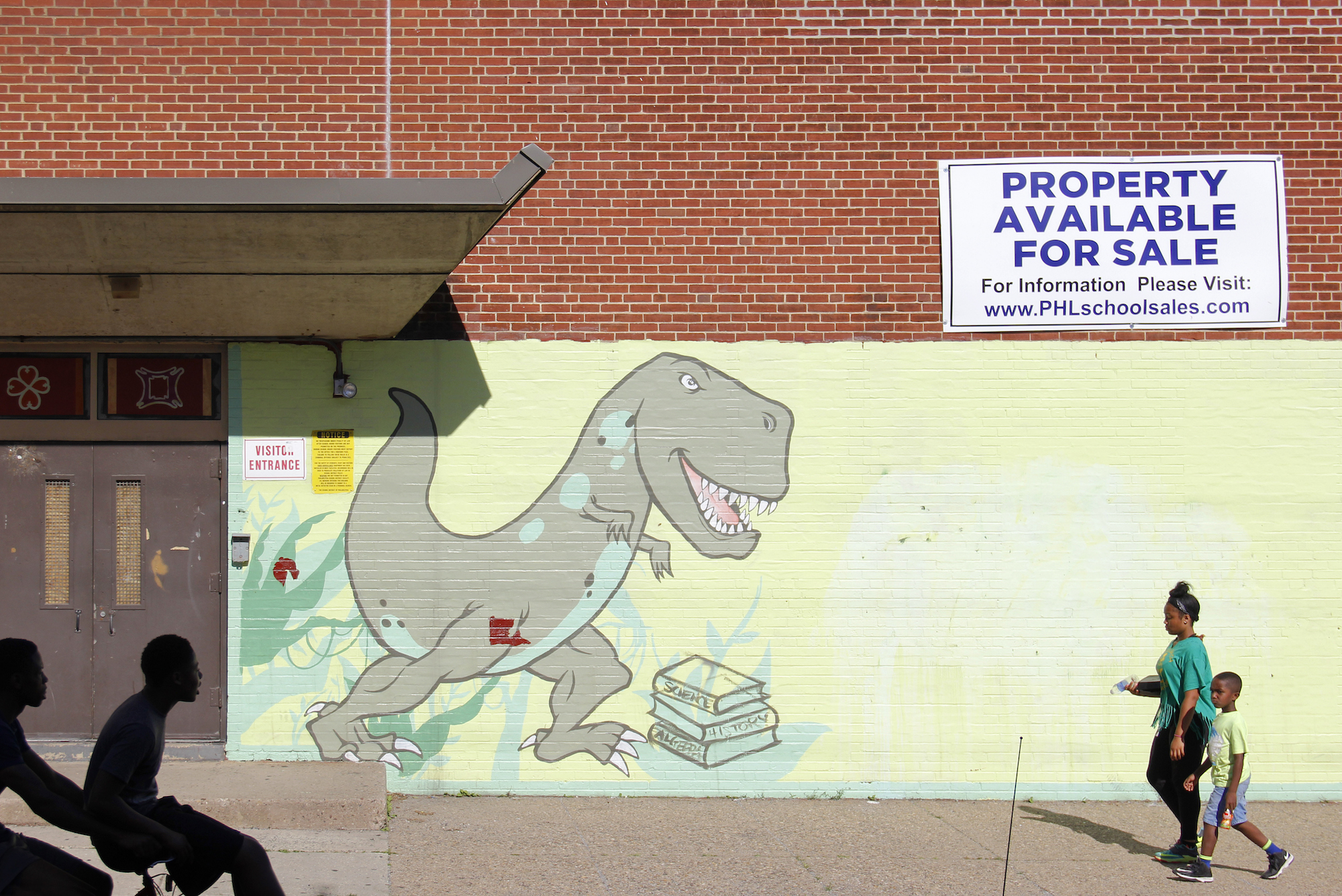Philadelphia is a gritty industrial town with a bootstrap mentality. The country’s fifth-most populous city may be home to major corporations and universities and a magnet for history-hungry tourists, but those who live there will tell you it is really a small town at heart.
For artists, this is particularly true. Artist-run spaces, not commercial galleries, dominate the art scene; cheap rents and large studio spaces present enticing environments in which to work; and art schools of every discipline and methodology abound. What defines the city’s art scene is its sense of community; arts programming is a central component of neighborhood initiatives and civic activism. Even the largest institutions, such as the Institute of Contemporary Art and the Philadelphia Museum of Art, consistently champion local artists. It is an artist city, through and through.
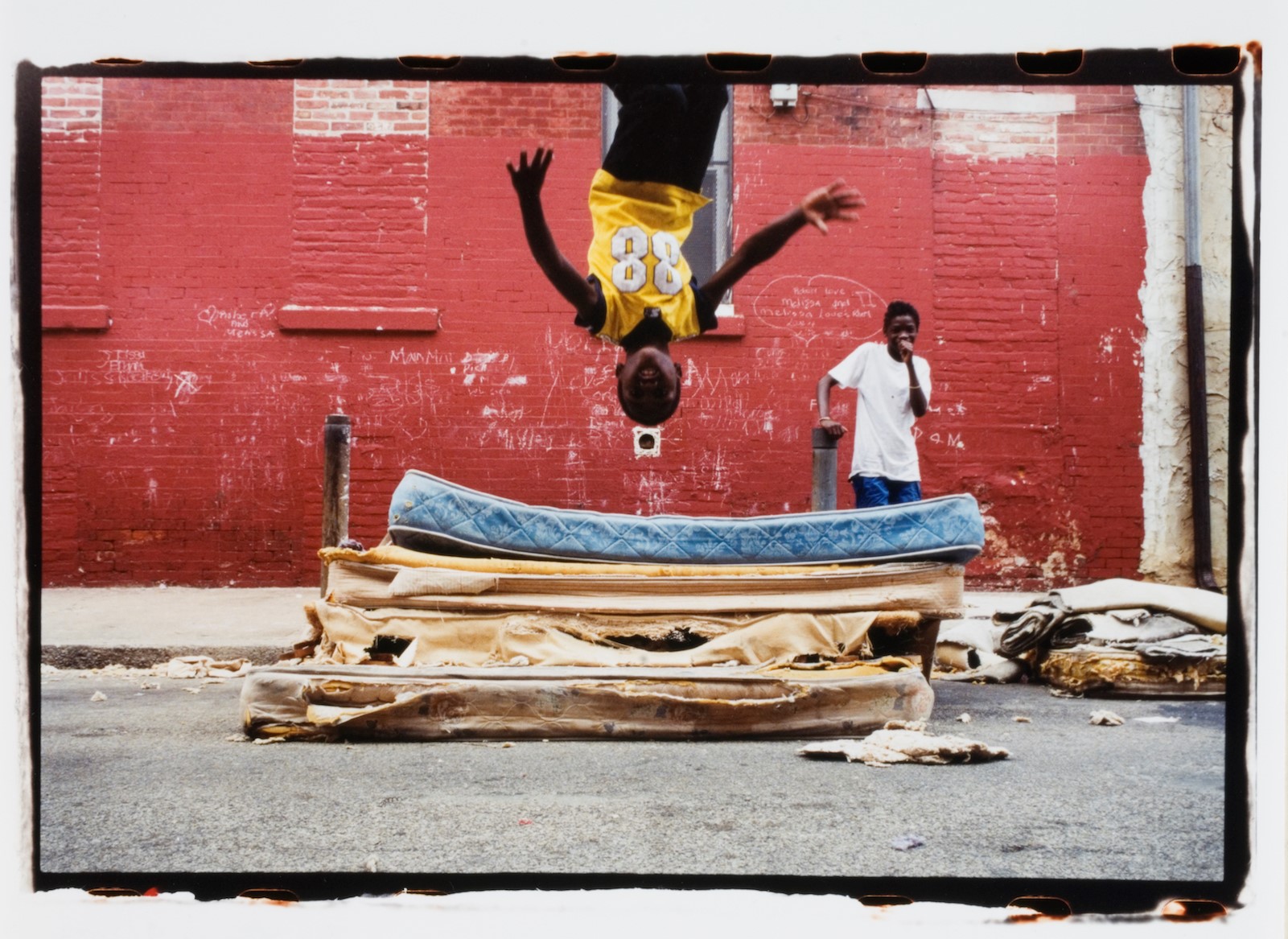
Zoe Strauss. South Philly (Mattress Flip Front), 2001 (negative); 2003 (print). Chromogenic print. Image: 6 7/8 x 10 1/8 inches (17.5 x 25.7 cm) Sheet: 8 x 10 3/8 inches (20.3 x 26.4 cm). Courtesy of the Philadelphia Museum of Art, Purchased with funds contributed by Theodore T. Newbold and Helen Cunningham, 2003-104-8. © Zoe Strauss.
This sense of local specificity is especially true for Philadelphia-based photographers who direct their lenses to the city’s urban landscape. Zoe Strauss is the undisputed queen of this genre, having photographed the streets of her hometown since 2000. Her camera captures the majority working-class residents of South Philadelphia in both intimate portraits and serendipitous snapshots among the hodge-podge of row houses that characterize the neighborhood. For a decade, she exhibited the printed works underneath an elevated portion of the I-95 highway. Images of her subjects were literally embedded within the city’s landscape, enabling dialogues about economic struggle and urban decline and about the beauty and diversity of the residents who call it home and embody the perseverance of this rusty city.
For emerging photographers, the city continues to offer a landscape of contradiction in an endless sea of mismatched architecture. Emma Stern, a cofounder of Gravy Studio and Gallery, a collaborative photography workshop and gallery in the Kensington neighborhood, focuses on the city’s seemingly overlooked nooks. Her Forgotten Spaces series captures abandoned parking lots, vacant lots, and rooftops; her camera points both at cracked concrete and at the sky, forming the place of a home that once was. The black-and-white series is devoid of people, a stark reminder of the proliferation of abandoned spaces in this metropolis.
Sahar Coston-Hardy is a landscape-architecture photographer interested in how images may reveal social structures of race and cultural identity. As part of the Back to School project in which local photographers shed light on recent public school closures across Philadelphia, Coston-Hardy documented concrete schoolyards peppered with weeds and buildings surrounded by chain-link fences plastered with “For Sale” signs. Throughout the series, she captures fleeting moments of local youths riding past on their bikes or a mother walking with her young child, the fate of the school closures contrasted against the people affected.
Philadelphia, as with other urban centers, provides a backdrop for photographs of abandoned and disintegrating properties, often called ruin porn. William Cress, a Philadelphia-based street photographer, is particularly drawn to this subject. He captures the exteriors of dilapidated structures with their abstract textures of decay and ventures inside them to show the remnants of once-inhabited places. Despite his skill in this genre, he also photographs what is thriving, and so much of Philadelphia is. In his series Philly Home Portrait, Cress photographs the front doors of residences across the city, capturing the personality of each architectural structure, whether defined by rusty iron bars or bright red shutters.
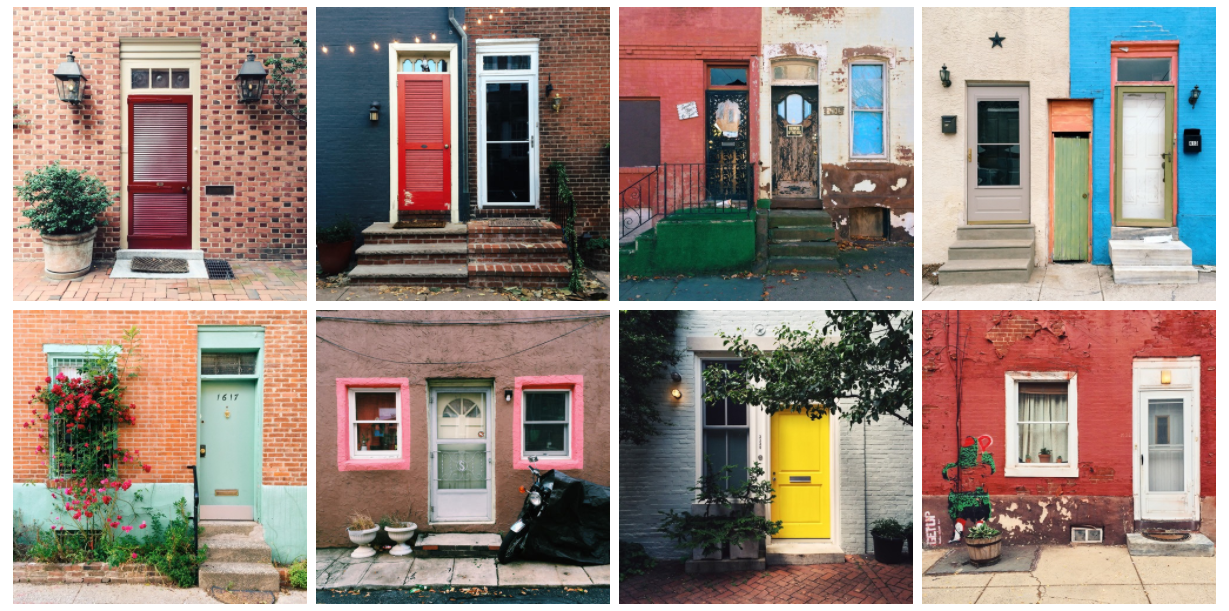
William Cress. Philly Home Portrait series, 2013-present. Image via the artist’s website.
While these photographers mostly focus their lenses on the city’s neglected and abandoned, they show us its character: the energy of its streets, the diverse makeup of its residents, and the potential of its landscape. Indeed, Philadelphia is a city with a deep history that has the talent and creative capacity to produce incredible works of art.


